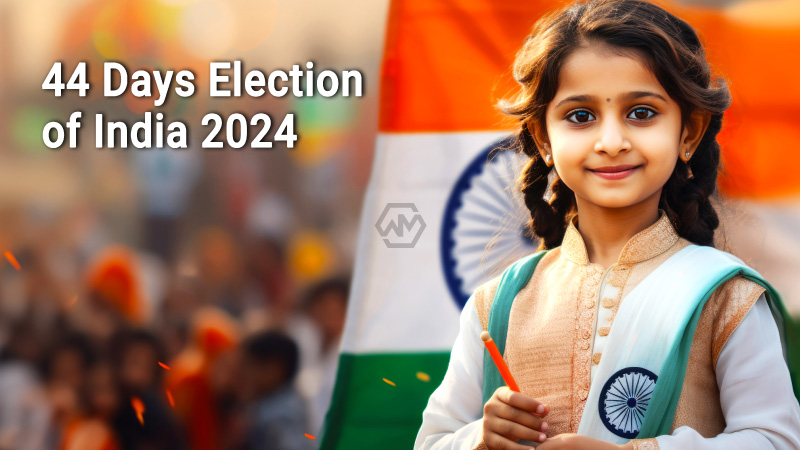- In 2019, casting a ballot required 39 days, and the current year’s political race is the second longest.
- With 969 million enrolled citizens, the size of India’s electorate is greater than the consolidated populace of the European Association.
- The vote to pick 543 administrators to the lower place of Parliament happens north of seven stages.
From April 19 to June 1, almost 970 million Indians — or more than 10% of the worldwide populace — are qualified to cast a ballot in everyday decisions. The mammoth activity is the greatest place on the planet and will require 44 days before results are declared on June 4.
State leader Narendra Modi is looking for a third progressive term. He will go head to head against an expansive yet thrashing collusion of resistance groups that are battling to challenge his allure. Most reviews anticipate Modi’s Hindu patriot Bharatiya Janata Party will win serenely, solidifying him as one of the country’s most well-known and considerable pioneers.
Long Multi-Phase Election of India
It comes down to two key reasons: the sheer size of India, the world‘s most crowded country, and the astounding degree of operations expected to guarantee that each enrolled citizen can project their voting form.
Throughout the long term, the span of casting a ballot has faltered. It required almost four months to finish the vote in India’s most memorable decisions in 1951-1952 after it acquired autonomy from English rule and only four days in 1980.
India’s 28 states and eight government regions will cast a ballot at various times. Each stage is one day, with the primary starting on April 19 and finishing on June 1.
While certain states will project their polling forms in a day, casting a ballot somewhere else may take more time. Uttar Pradesh, the biggest express the size of Brazil with 200 million individuals, will decide on every one of the seven days, for instance.
The Political Race Commission of India, which manages the vote, needs to ensure there is a democratic corner accessible within 2 kilometers (1.2 miles) of every citizen.
Around 15 million political race authorities and safety faculty will cross the nation’s deserts and mountains — in some cases by boat, foot, and, surprisingly, riding a horse — to attempt to arrive at each citizen.



